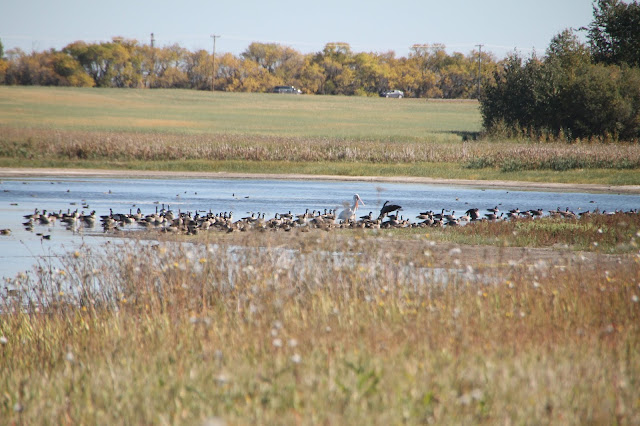I cannot recall the moment I decided to get interested in
birds, but over the past couple years I have slowly been working on my bird
watching skills. I am still very very novice, but this has become a truly
fulfilling and fun hobby.
(American goldfinch in my neighbours' crabapple tree)
I continually tell people who raise an eyebrow that birding
is basically playing Pokemon Go in real life, but with a near infinite number
of Pokemon to catch. You can even gamify it using an app like Audubon, or a
simple paper checklist, to record all your “catches.”
(Tree swallows have hemmed and hawed over our bird house for two summers but never moved in)
Previously I, like many people, just saw birds in the
background. While it might be pretty amazing to see a deer or a fox “in the
wild”, I didn’t register that it could be just as exciting to observe birds in
their natural (or slightly unnatural, such as at a feeder) habitat. Once that
switch flipped, I not only had a challenging new hobby but a simple way to
practice mindfulness nearly anywhere I went.
I don’t know if there’s a “best” way to start birding but
what I did was get a bird book, and then just started taking pictures of birds,
especially those I couldn’t identify. I’d use the photos and the book to ID
them when I got home. I also print out a picture of each species and put it in
a photo album, which serves as my “bird collection.” It helps to have a camera
with a high zoom and not just a phone. For more affordable camera options, Canon’sPowerShot Elph line is great as it has pretty high zoom capabilities and fits
in a pocket – you’re not going to get magazine quality photos, but definitely
good enough to ID a bird that’s fairly far away. I also have a DLSR with an
18-250mm telephoto lens, which I’m thinking about upgrading to something more
powerful as a grad present to myself, but this is more of a luxury than a
necessity. You can also just use (cheap) binoculars but I may be too entrenched
in the “pics or it didn’t happen” generation because I prefer to have photos.
(Got to watch this baby learn to fly in our yard over a two week period, do I have a thousand pictures of it? You know the answer to that question)
I am pretty lucky because there is a storm pond about a
block from my house which attracts a lot of bird life. I can usually ID between
10-20 different species on a 30 minute walk around the pond, and I’ve yet to go
there and not see something new to me (who knew there were soooo many different
kinds of ducks??). It’s also pretty amazing what can happen if you put a feeder
in your yard – even though our area is very “newly developed suburbia” with no
mature trees and the bird life is 95% house sparrow, we’ve also had a
relatively wide variety of other birds show up on our property – American goldfinches, house finches, slate
coloured juncos, tree swallows, cedar waxwings, American robins, one yellow
warbler, chipping sparrows, brown headed cowbirds (which laid an egg that the chipping sparrow had to raise), black-capped chickadees, Brewer’s blackbirds,
and the occasional crow or raven. It’s also not uncommon to see pelicans
soaring around right over the deck, which gives my tiny suburban yard a bit of
a tropical feel.
(Chipping sparrow mom feeding brown headed cowbird baby)
When I recently travelled to Bologna, Italy for a
conference, I was pretty struck by the lack of green space and bird life in the
city (other than pigeons). After traveling I often come back jealous of cities
that aren’t designed around worshipping the Almighty Car, but this time I did
realize how lucky we are in Saskatoon to have all the green space we do, especially
our urban forestry program.
(Great blue heron coming to say hello at the storm pond)
There’s probably a bird out your window right now – can you
identify it? What's it doing, and why? These simple questions are all it really takes to get hooked!
(We won't talk about what happened to this baby killdeer shortly after the photo was taken)
(We cannot end on such a morbid note, so here's a pelican that appears to be the leader of a flock of geese, Chappell Marsh)







No comments:
Post a Comment